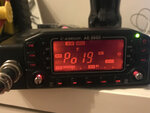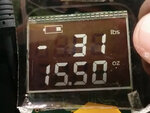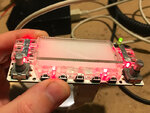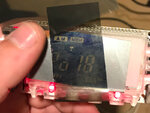RevDNS
Newbie level 3

Hello,
Originally it working in inversion, a blue background with white marks.
LED's backlight has white color, but I has changed it to red.
Results:

Everything would be fine in dark places, but in a bright environment LCD is blue.
I have pulled off both polarizing films and tried rotate in all possible ways.
I can't obtain black background with white marks as on picture:

Can anyone help me with this LCD?
Thanks a lot!
I am trying to modify the LCD of CB Radio: Albrecht AE 6890.Originally it working in inversion, a blue background with white marks.
LED's backlight has white color, but I has changed it to red.
Results:

Everything would be fine in dark places, but in a bright environment LCD is blue.
I have pulled off both polarizing films and tried rotate in all possible ways.
I can't obtain black background with white marks as on picture:

Can anyone help me with this LCD?
Thanks a lot!


